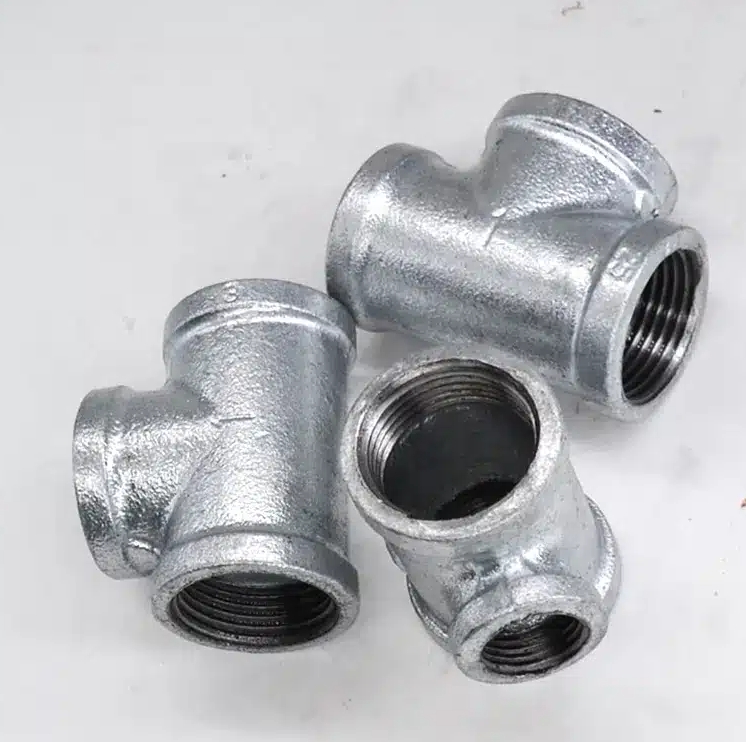Welding Malleable Iron Pipe Fittings:
Corrosion Susceptibility:
Malleable iron, the material commonly used for welding fittings, is generally more susceptible to corrosion compared to some other pipe fitting materials, such as steel or stainless steel.
The carbon content and the manufacturing process of malleable iron can make it more vulnerable to various forms of corrosion, including oxidation, pitting, and galvanic corrosion.
Surface Finish:
Welding malleable iron fittings typically have a raw, unfinished surface, which provides less protection against corrosion compared to other surface treatments or coatings.
The welding process can also introduce additional vulnerabilities to the surface, such as heat-affected zones, which may be more prone to corrosion initiation.
Galvanic Corrosion:
When paired with dissimilar metals in a piping system, welding malleable iron fittings can be more susceptible to galvanic corrosion, welding malleable iron pipe fittings particularly if they are in contact with more noble metals, such as copper or stainless steel.
Grooved End Fittings:
Corrosion Resistance:
Grooved end fittings are commonly made from ductile iron or steel, which generally have better corrosion resistance properties compared to malleable iron.
These materials can better withstand various corrosive environments and mechanisms, such as oxidation, chemical attack, and galvanic corrosion.
Surface Coatings:
Grooved end fittings often have factory-applied protective coatings, such as epoxy or galvanization, which provide an additional barrier against corrosion.
These coatings can significantly enhance the overall corrosion resistance of the fittings, especially in harsh environments.
Compatibility with Corrosion-Resistant Piping:
Grooved end fittings can be more readily paired with corrosion-resistant piping materials, such as stainless steel or plastic, without increasing the risk of galvanic corrosion.
This compatibility allows for the creation of piping systems that are more resilient to corrosion.
In summary, grooved end fittings generally exhibit better corrosion resistance properties compared to welding malleable iron pipe fittings due to the inherent material characteristics, surface treatments, and compatibility with other corrosion-resistant piping components. The choice between these two types of fittings should consider the specific corrosive environment and the overall system requirements.

Previous: What are the Sizes of Motor Graders?
Next: Understanding Telescopic Aerial Work Platforms: Features, Applications, and Benefits
Copyright:@2020-2021
Comments Please sign in or sign up to post.
0
0 of 500 characters used